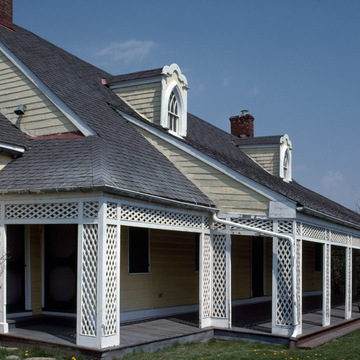You are here
Woodville Plantation (John and Presley Neville House)
This National Historic Landmark at the edge of Chartiers Creek is a mecca for student fieldtrips because it illustrates well the radically different way the region might have turned out had it not industrialized so soon after this house was built. When General John Neville built his log house (now the kitchen) on his 7,000-acre land grant, he registered the plantation as part of Virginia, since he refused to recognize Pennsylvania's claim to these lands.
This plantation aspired to be Mount Vernon, especially as its living room, entrance hall, parlors, and bedrooms were added to the kitchen nucleus. This was to be expected, perhaps, for John Neville was a blood
Writing Credits
If SAH Archipedia has been useful to you, please consider supporting it.
SAH Archipedia tells the story of the United States through its buildings, landscapes, and cities. This freely available resource empowers the public with authoritative knowledge that deepens their understanding and appreciation of the built environment. But the Society of Architectural Historians, which created SAH Archipedia with University of Virginia Press, needs your support to maintain the high-caliber research, writing, photography, cartography, editing, design, and programming that make SAH Archipedia a trusted online resource available to all who value the history of place, heritage tourism, and learning.















